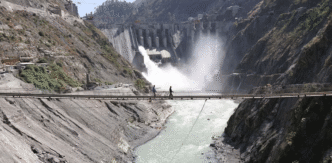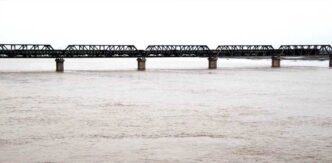Heavy Rains and Flooding Threaten Sindh as Meteorological Department Issues Widespread Alert
KARACHI, SINDH – The Pakistan Meteorological Department (PMD) has forecast a significant rain spell across multiple districts of Sindh from September 7 to 11, warning of potential urban flooding, waterlogging, and disruptions to daily life. The alert comes as a low-pressure system over India’s Gujarat-Rajasthan region intensifies and moves westward, amplifying monsoon currents in the province .
Key Details of the Forecast
Affected Districts:
High-Risk Areas: Tharparkar, Umerkot, Mirpurkhas, Sanghar, Khairpur, Shaheed Benazirabad, Dadu, Hyderabad, Thatta, Badin, Sujawal, and Jamshoro are expected to experience “widespread rain-wind/thundershowers with scattered heavy to very heavy falls” .
Moderate-Risk Areas: Larkana, Shikarpur, Kashmore, Sukkur, Jacobabad, and Ghotki may see “scattered moderate to isolated heavy falls” .
Karachi Specifics: The city began receiving rain on Sunday evening, with areas like Bahria Town, Liaquatabad, and North Nazimabad already reporting downpours. The PMD predicts intermittent heavy showers until Thursday, posing risks of urban flooding in low-lying zones .
Weather System Dynamics:
The intensified “deep depression” over southwestern Rajasthan is projected to enter southeastern Sindh within 24 hours, driving robust monsoon currents into the region .
Rain-bearing clouds are currently concentrated over eastern Karachi and expected to spread further, with isolated “very heavy falls” exceeding 100mm in some districts .
Hazards and Warnings:
Urban Flooding: The National Disaster Management Authority (NDMA) has highlighted risks of waterlogging in coastal and low-lying areas, including Karachi, Thatta, and Badin .
Flash Floods: Hill torrents in the Kirthar Range (Balochistan) and Sulaiman Range (South Punjab) may surge, threatening nearby communities .
Infrastructure Damage: Past rains in August caused fatalities, power outages, and crop destruction in Sindh, underscoring vulnerabilities .
Precautionary Measures and Official Response
Authorities, including the NDMA and PMD, have urged residents to avoid crossing rivers and streams, relocate from flood-prone zones, and adhere to emergency instructions .
Disaster management agencies are on high alert, with monitoring intensified at major barrages (e.g., Sukkur, Guddu) where water inflows have surged dramatically .
Evacuation orders have been issued for vulnerable areas like Sehwan’s river belt, reflecting proactive measures to mitigate loss of life and property .
Contextual Background
This rain spell follows earlier monsoon-related casualties and infrastructure strain in Sindh. In August, 15 fatalities were reported in Karachi alone due to collapsing structures, electrocution, and drowning . Provincial data indicates 58 rain-related deaths this season, emphasizing the urgency of preparedness .
Outlook Beyond Sindh
The weather system is also expected to impact southern Punjab and Balochistan, with isolated heavy falls predicted in regions like Lasbela and Khuzdar . However, central and northern Pakistan may largely experience hot, dry conditions post-September 9 .
Conclusion
As Sindh braces for prolonged heavy rainfall, coordinated efforts between meteorological agencies, disaster authorities, and local communities are critical to minimizing risks. Residents are advised to stay updated on alerts and prioritize safety during this period.
For real-time updates, refer to the and advisories.







